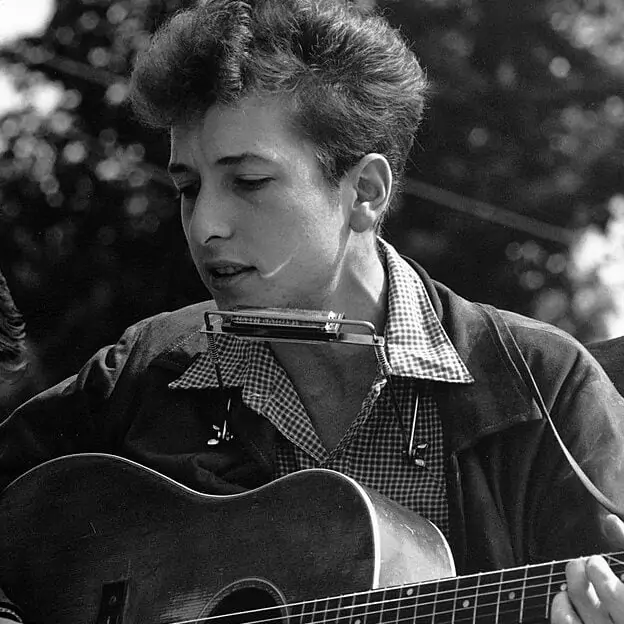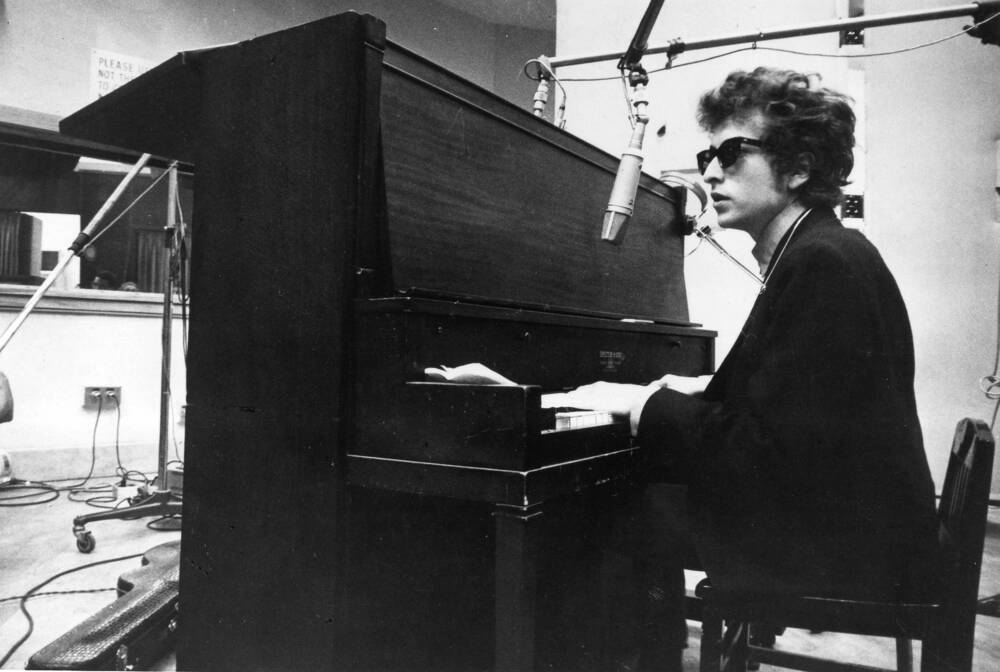Bob Dylan’s “Like a Rolling Stone” is one of the most iconic songs ever written, and its title has become synonymous with musical genius. Named by Rolling Stone magazine as the greatest song of all time in 2004, this song transcended its genre and became a cultural touchstone. From its cryptic lyrics to its raw, emotional delivery, “Like a Rolling Stone” continues to captivate audiences and influence generations of artists. In this article, we’ll delve into the fascinating backstory and meaning behind this legendary track.
The Birth of a Musical Revolution

In the early 1960s, Bob Dylan was at a crossroads in his career. A folk singer by trade, he had risen to fame with his protest songs and poetic lyrics that resonated deeply with the political climate of the time. However, by 1965, Dylan was undergoing a radical transformation that would leave his fans in shock. He ditched the acoustic guitar for an electric one, a move that sparked outrage among folk purists and alienated some of his fan base. But it also propelled Dylan to new creative heights.
“I guess I was going to quit singing,” Dylan confessed in 1966. “I was very drained, and the way things were going, it was a very draggy situation…” Despite the overwhelming criticism, he continued to push forward, and the result was Highway 61 Revisited—the album that would introduce the world to “Like a Rolling Stone.” This song, in particular, marked a turning point in Dylan’s career, as it was a declaration of both artistic freedom and personal reinvention.
From Personal Struggle to Poetic Creation
The writing process for “Like a Rolling Stone” was anything but conventional. Dylan began the song in 1965 after returning from a tour in England. He holed up in a cabin in Woodstock, New York, with his girlfriend Sara Lownds and started scribbling down what he later described as a “vomiting” of ideas. The original draft of the song was over 10 pages long—far too lengthy to fit into a traditional song format.
“I had never thought of it as a song,” Dylan admitted. “Until one day I was at the piano, and on the paper it was singing, ‘How does it feel?'” That moment of inspiration turned the raw text into the iconic lyrics we know today. He cut down the original manuscript and crafted the final version, which became a four-verse song, complete with a compelling chorus. The title “Like a Rolling Stone” was born, a phrase inspired by the proverb “A rolling stone gathers no moss,” which typically refers to someone constantly on the move, avoiding responsibility and settling down.
Unpacking the Meaning: A Fall from Grace
At its core, “Like a Rolling Stone” tells the story of a woman who has fallen from the heights of privilege to the depths of poverty and anonymity. This woman, often referred to as ‘Miss Lonely,’ was once someone who had everything but now finds herself stranded, like a “complete unknown,” rolling aimlessly through life. The image of a rolling stone, a figure without direction, reflects her total loss of status.
The meaning behind the song is rich with layers. While the phrase “a rolling stone” traditionally carries negative connotations, implying a lack of stability or purpose, Dylan’s lyrics suggest something more complex. In fact, the absence of attachments and expectations might be liberating for ‘Miss Lonely,’ who, as Dylan once said, “when you got nothing, you got nothing to lose.”
Dylan’s own words further illuminate the sentiment behind the song. He revealed to journalist Jules Siegel that the song was not a simple act of anger or revenge: “It was all about my steady hatred directed at some point that was honest. In the end, it wasn’t hatred, it was telling someone something they didn’t know…telling them they were lucky. Revenge, that’s a better word.”
The Mystery of Miss Lonely: Who Is She Really?

One of the most intriguing aspects of “Like a Rolling Stone” is the question of who ‘Miss Lonely’ really is. Many have speculated that the song is a direct commentary on someone Dylan knew personally. Some believe it’s about actress Edie Sedgwick, a former muse of Andy Warhol who allegedly had a brief romance with Dylan in 1965. After their relationship ended, Sedgwick’s life spiraled downward, mirroring the themes of the song.
Others have suggested that the song is about Joan Baez, a fellow folk singer with whom Dylan had a turbulent relationship during the 1960s. Despite the many rumors, Dylan has never confirmed that the song was specifically about either woman, and he’s consistently maintained that “Like a Rolling Stone” reflects broader themes rather than a single individual.
Some interpret the song as a metaphor for the loss of innocence and the harsh realities of life. Robert Shelton, Dylan’s biographer, suggests that “Rolling Stone” is about the shattering of myths and the inevitable confrontation with life’s difficult truths.
The Legacy of “Like a Rolling Stone”

When “Like a Rolling Stone” was released as the lead single from Highway 61 Revisited in 1965, its length—over six minutes—was almost unheard of for a radio single. At the time, songs were typically much shorter, usually under three minutes. Despite this, the song became an immediate success, reaching number 2 on the Billboard Hot 100 and becoming one of the most famous tracks of Dylan’s career.
“Like a Rolling Stone” is often credited with redefining popular music, pushing the boundaries of what was acceptable in terms of both song structure and content. Its influence on artists such as Paul McCartney, Bruce Springsteen, Frank Zappa, and Jimi Hendrix is immeasurable. Hendrix, in particular, performed the song frequently with his band, The Jimi Hendrix Experience, introducing it to a whole new generation of fans.
Dylan himself has referred to “Like a Rolling Stone” as the best song he has ever written. Its profound impact on both rock music and popular culture makes it undeniable that the song’s legacy will live on for generations to come.
Conclusion: The Enduring Power of “Like a Rolling Stone”
Bob Dylan’s “Like a Rolling Stone” is more than just a song; it’s a musical and cultural revolution. It transformed Dylan from a folk icon into a rock legend and paved the way for future generations of musicians to push the boundaries of what pop music could be. With its complex lyrics, raw emotion, and innovative sound, “Like a Rolling Stone” continues to stand the test of time. It is a song that speaks to the human condition—the struggle, the fall, and the eventual rise—and remains one of the greatest songs ever written, forever etched in the annals of music history.


